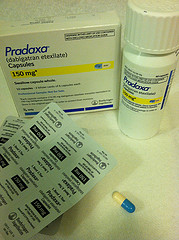
Some of the people who comment on this blog seem astounded that I can still run and bike while in atrial fibrillation. This surprises me because, at this point, I feel fine. Frankly just being on a relatively high dosage of a beta blocker (Carvedilol) is much more of a hindrance to my running than being in atrial fibrillation is.
But the big difference is that I am in permanent (constant) a fib. I’m used to it. And since I started taking the beta blocker I barely even notice the irregular beat. I’m slow now, and I get light-headed when I get up, but that’s it.
But recently I read a thread on a Facebook group, Atrial Fibrillation Information Exchange, and it was a real eye opener. I have forgotten how much other people suffer with atrial fibrillation. Here is a sample of comments (with spelling corrections) left in response to thread that asked:
Wondering what symptoms you get when in afib? What others feel and deal with?
-Rapid heart rate (220+), chest pressure/pain, dizzy, irregular heart beat, feel like I am going to lose consciousness.
-First my face feels warm,then the heart starts jumping erratically, can’t take an accurate pulse-then I know!
-I get a breathlessness, my rate stays low though but the overall feeling is like anxiety or the way one would feel before giving a speech or before competing in an athletic event etc.
-Mine is rapid heart rate,palpitations and anxiety
-All of the above plus hot and cold and violent vomiting. Also, if I’m sick, vomiting can bring it on
-Feels like there is a fish swimming in my chest, also weak and dizzy.
-Sweated and like your going to pass out , irregular and rapid heart beat , drinking cold water will help me convert, after I’m exhausted even will fall asleep haven’t had one in a few years now
-Like a squirrel doing back flips in my chest
-Felt like an anxiety attack plus tight feeling in throat( like it was dry and closing up) made me cough. Light headed/ dizzy, tired.
-I’ve had 8 AFib episodes since June of 2011. It always happens when I come out of a state of rest and stand up and start to walk. Except last month all I did was hiccup and cough at the same time and it triggered my AFib. Went to the ER and had cardioversion. I’ve never felt sick, dizzy, sweaty, breathless, nothing. Just racing heartbeat with strong palpitations.
-Mine was accidentally diagnosed initially on a routine office EKG.
-I get a “sinking” feeling in my chest.
-Flopping in my chest, weak, nausea, panic, sweaty, very very uncomfortable.
-I never come out of AFib. I had a stroke 5 years ago that affected my left side. I developed central pain syndrome in my left arm. So my heart sort of hurts and I have pain in my left arm.
-Weak breathless chest tight
-I had no symptoms other than lack of sleep and then the symptoms that go along with that. And symptoms from the meds. Oh, and the stroke.
-Sometimes it’s real quick flutters, or a skipped beat, I feel weak, sluggish, my chest hurts a little, and sometimes I get flushed and feel real anxious and nervous for awhile.
-Anxious & funny feeling in chest
-It’s almost like it’s gonna be an anxiety attack, but never goes to one thank goodness
-I have had episodes so bad I thought I would die. Then while in a fib, having to urinate every five minutes. It was like my body was in total rebellion. Sudden movements can trigger. Stress is a biggee.
I need to consider myself fortunate that I am so stable and feel so normal in permanent atrial fibrillation. I can recall what it was like when I was in sinus rhythm and would go into atrial fibrillation, usually during a long run, or even during a marathon – this is how I felt: I felt like crap – weak, mild malaise, light-headed, with vague chest and shoulder pain with exertion. Not pleasant by any means.
I’m curious – how do other fib runners feel while in atrial fibrillation? Please feel free to comment below.












